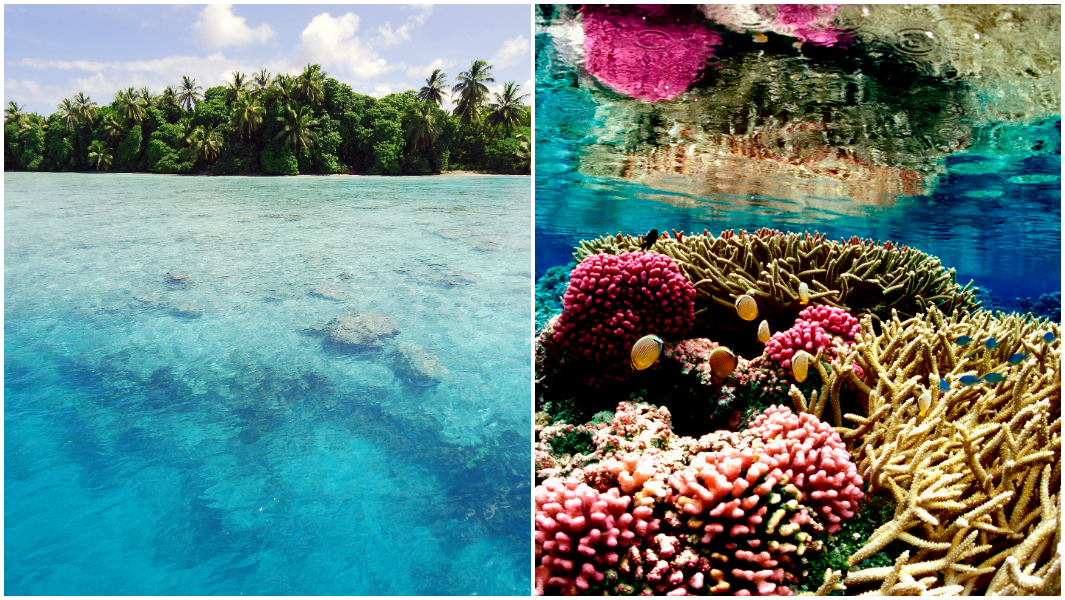Palmyra: The world's most expensive island that you can't visit without a permit

In a bid to preserve one of the most pristine places left in the tropical Pacific, The Nature Conservancy purchased the Palmyra atoll 23 years ago for a very heavy price tag.
Palmyra Atoll is a magnificent cluster of uninhabited coral islets 960 miles (1,450 km) southwest of Honolulu, Hawaii.
The atoll was purchased for $30 million (£21 million) from the Fullard-Leos family, a Honolulu family that had owned it for 80 years.
The acquisition makes Palmyra the most expensive island ever sold.

Palmyra is full of a multitude of treasures.
Consisting of 26 islets, it contains some of the most isolated, oldest, and healthiest atolls, reefs, and islands and is home to a radiant underwater and terrestrial world.
Palmyra has five times more coral species than the Florida Keys and three times as many as Hawaii.
It is home to the world’s largest land invertebrate, the coconut crab, and a population of red-footed booby birds that are only otherwise found on the Galapagos Islands.
The lush vegetation supports over a million birds of 29 species, and the atoll is the only nesting habitat for migratory seabirds and shorebirds within 450,000 square miles (1,165,494 square kilometres) of ocean.
Palmyra’s tropical rainforest also provides crucial habitat for native geckos, insects, and other rare species.
Made up of about 680 acres of above-water forest lands and 515,232 acres of submerged lands and open water, it consists of an extensive reef, three shallow lagoons, and a number of sand and reef-rock islets and bars covered with vegetation.
Palmyra Atoll doesn’t have an indigenous population but hosts a small transient group of staff and scientists from the US government and from The Nature Conservancy.
The Nature Conservancy and US Fish and Wildlife Service have partnered in the management of Palmyra since 2000 to protect the endangered marine wilderness and to establish a place for conservation scientists to conduct their work.
Palmyra was named by American ship captain Cornelius Sowle, whose vessel, The Palmyra, became stranded during a storm in 1802.
According to The Naval Chronicle for 1805, at the time of his discovery, Captain Sowle wrote:
"There are no inhabitants on the island, nor was any fresh water found; but cocoanuts [sic] of a very large size, are in great abundance; and fish of various kinds and in large shoals surround the land."
In 1816, a Spanish pirate ship named Esperanza, loaded with plunder from Incan temples, became shipwrecked on the atoll’s coral reefs and its cargo was lost forever.

In 1862, two New Zealanders who were married to Hawaiian women, obtained a deed to the atoll from King Kamehameha V, and when Hawaii was annexed to the US in 1898, Palmyra was excluded.
Eventually it was passed to the Fullard-Leos brothers, a family of roofing contractors, who bought the atoll for $70,000 (£56,405) before later being acquired by The Nature Conservancy.
Visiting Palmyra requires a permit from the US Fish and Wildlife Service.
Their website advises: "Public access to Palmyra Atoll is self-limiting due to the very high expense of traveling to such a remote destination. The Nature Conservancy owns and operates the only airplane runway on Palmyra, and by boat it's a 5–7 day sailing trip from Honolulu.”

There are four ways the public may gain access to the refuge:
- Working for, contracting with, or volunteering for The Nature Conservancy or Fish and Wildlife Service
- Conducting scientific research via Fish and Wildlife Service Special Use Permits
- Invitation through The Nature Conservancy sponsored donor trip
- Visitation by private recreational sailboat or motorboat.
To this day, Palmyra Atoll is America’s lone incorporated territory and those visiting must freeze and disinfect their belongings to avoid introducing any new invasive species.
Want more? Follow us across our social media channels to stay up-to-date with all things Guinness World Records! You can find us on Facebook, Twitter, Instagram, TikTok, LinkedIn, and Snapchat Discover– including our new Guinness World Records Extreme channel.
Don’t forget, we’re also on YouTube!
Still not had enough? Follow the link here to buy our latest book, filled to the brim with stories about our amazing record breakers.


